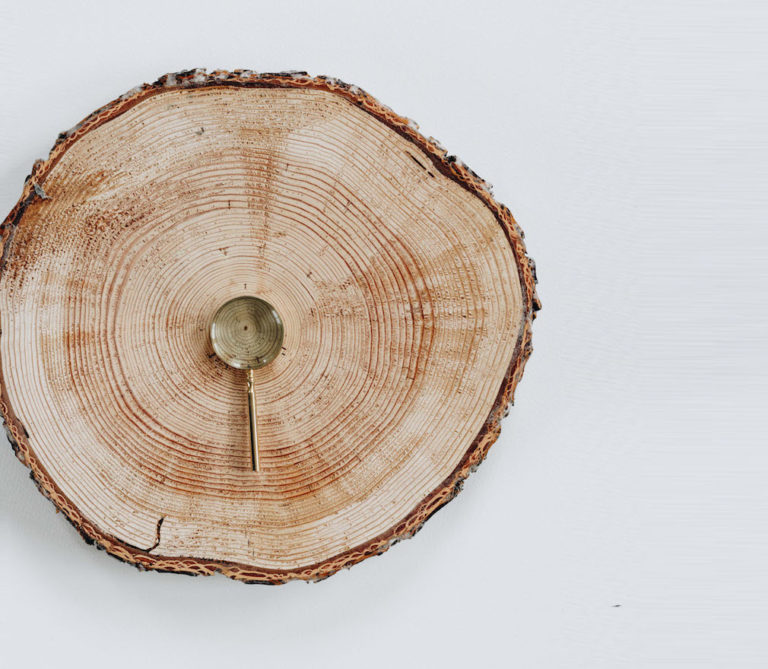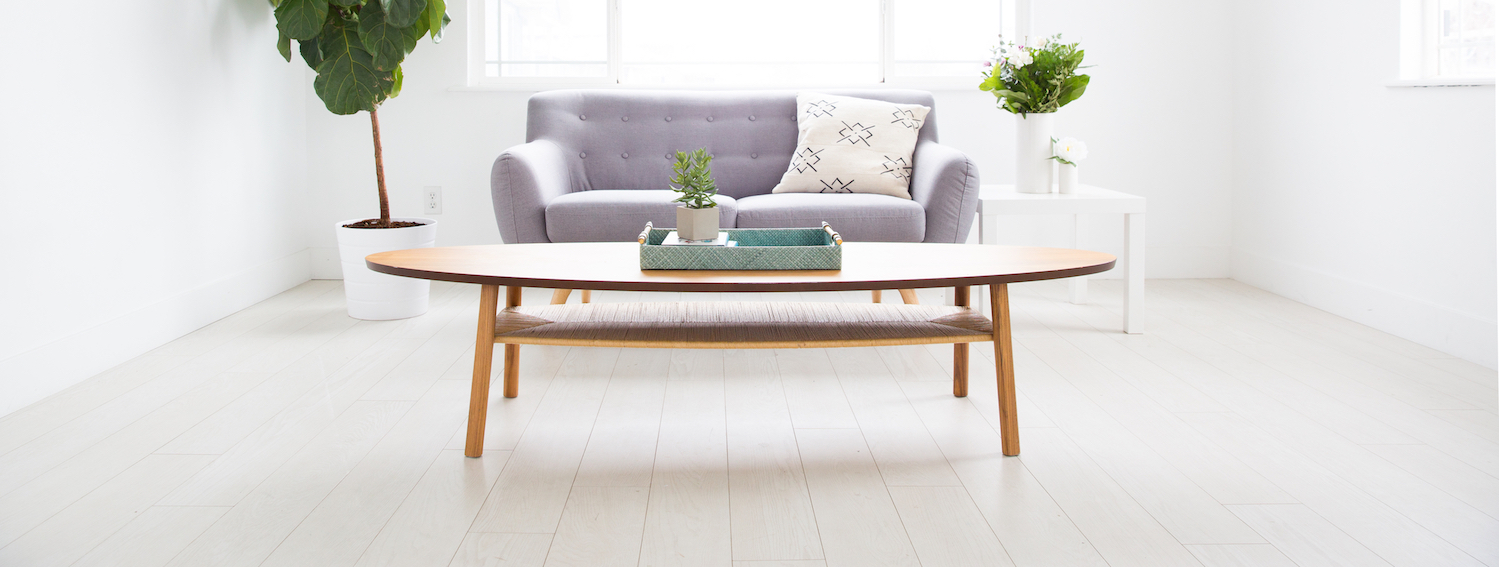
How to Apply Your Second Purchase Strategy to Big Ticket Items
The one-and-done buyer problem is a challenge that nearly every retailer faces. But retailers who can overcome this challenge have the potential to unlock enormous revenue opportunities.
As a result of this potential, we recently dove deeper into the one-and-done buyer problem to understand common customer behaviors and share advice on how to unlock retail’s second purchase opportunity.
However, the one-and-done buyer problem manifests itself somewhat differently for various types of retailers. For example, it appears far easier for, say, apparel retailers to drive a second purchase than, say, furniture retailers. That’s because consumers will buy multiple shirts or pants over the course of a year, but once someone purchases a couch, they likely won’t purchase another for quite a while.
So how can retailers who sell bigger ticket items that really are one-and-done purchases overcome the one-and-done buyer problem? Let’s explore data from furniture retailers to answer this question.
Is the One-and-Done Buyer Problem Inevitable for Furniture Retailers?
Let’s start by addressing the elephant in the room: Driving a second purchase from furniture shoppers is slightly more difficult than driving a second purchase from apparel shoppers. But only slightly.
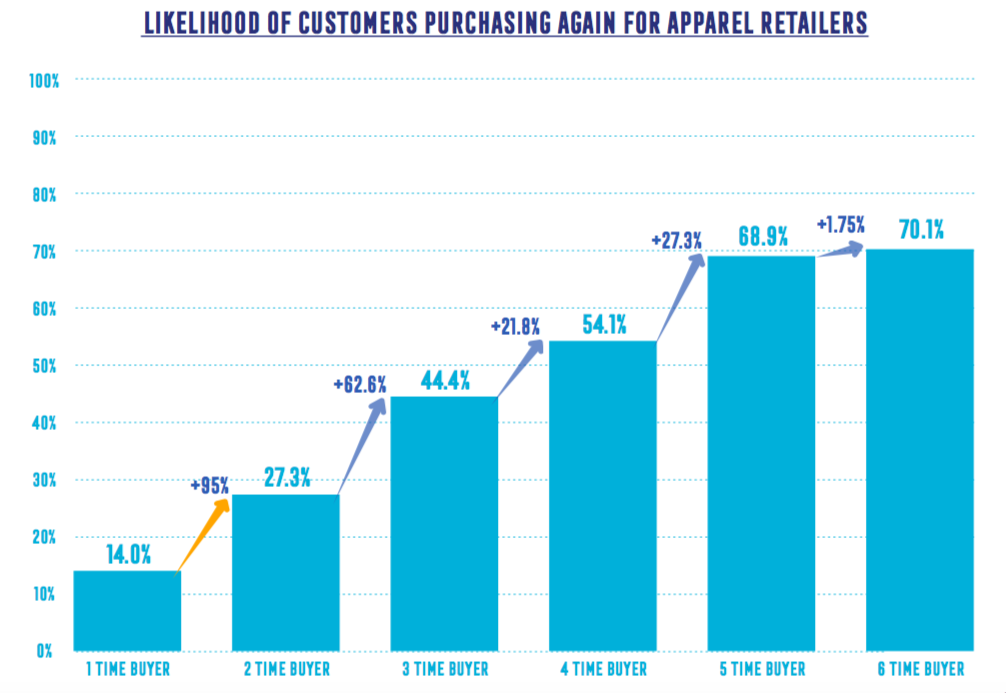
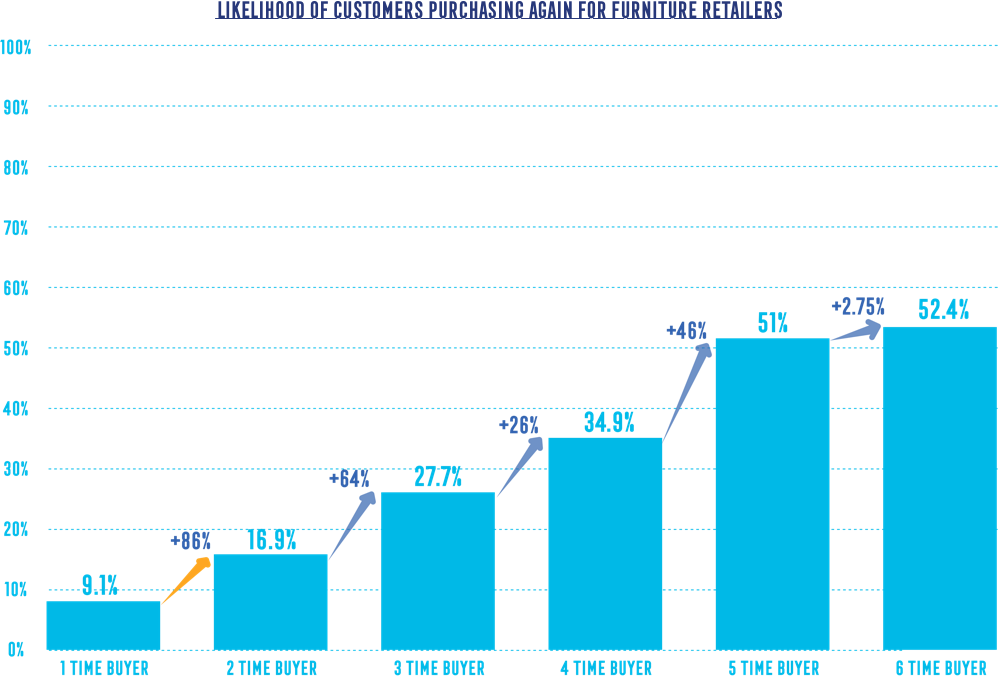
That said, the second purchase remains the most important purchase, as furniture retailers (like their apparel counterparts) see the biggest increase in likelihood to buy again between the first and second purchase.
But unlike apparel retailers, the target window of opportunity for driving a second purchase is narrower for furniture retailers. Whereas apparel retailers should focus their efforts on the first 100 days after a shopper’s purchase, furniture retailers should work within the first 75 days, as chances of a second purchase dip well below 10% after that window.
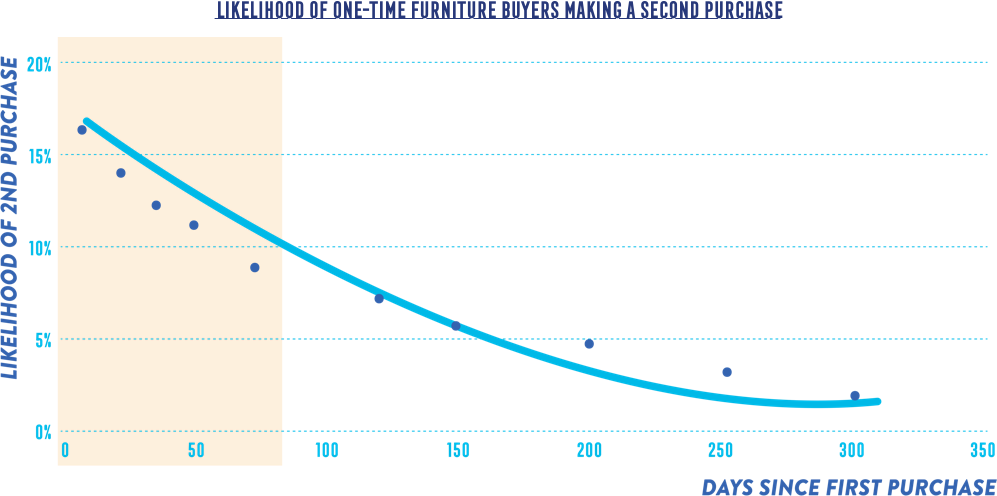
How to Get Strategic About Driving Second Purchases for Big Ticket Items
We’ve established that shoppers for big ticket items like furniture don’t have to be one-and-done buyers. But how exactly do you drive a second purchase from these customers? You need to get strategic in your outreach by using data to inform your efforts.
In evaluating the group of furniture retailers, we found that second purchases are highly likely to come from a different category than first purchases.
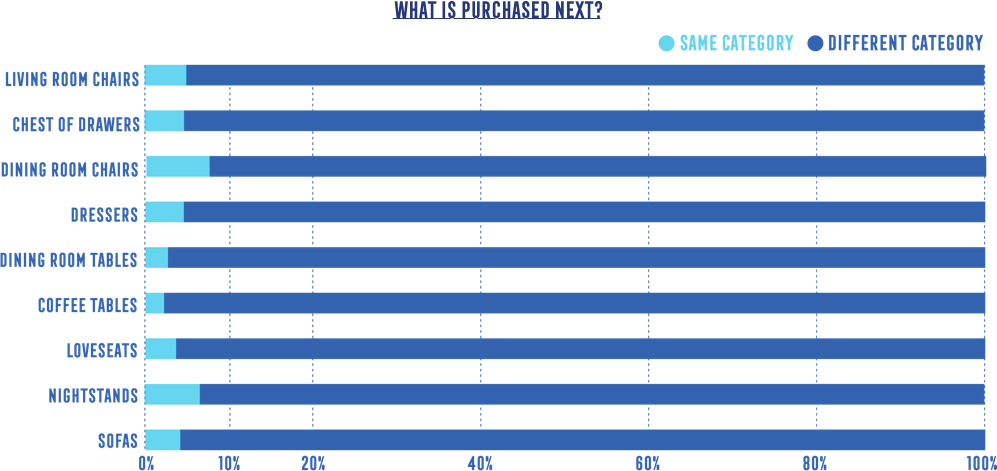
This difference in category makes sense, as shoppers likely don’t need multiple dining room tables or sofas.
What do they need? Once again, it’s all about the data, as you can evaluate purchase data from past two-time buyers to identify what one-time buyers in each category are most likely to purchase next.
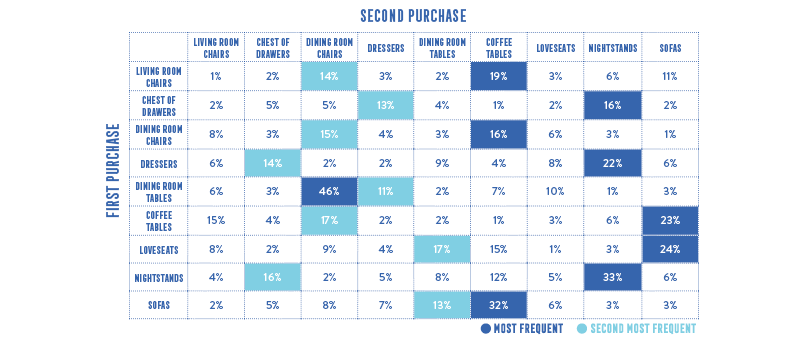
For industries like apparel, this analysis typically produces a diagonal line of blue boxes, as consumers tend to purchase from the same category again. But for furniture retailers and others who sell bigger ticket items, the results are clearly much different, as shoppers move more fluidly across product categories.
Beyond identifying what products to recommend to one-time buyers, you also need to determine the best time at which to reach them with that recommendation. To do so, look at your historical data for second purchases based on product category to identify the median days between the first and second purchase for different groups of shoppers.

Put Your Data to Work: Don’t Leave Second Purchases Up to Chance
Once you’ve identified common second purchase patterns in terms of both what customers tend to purchase and when they tend to make that purchase, it’s time to put that data to work. After all, if you leave second purchases up to chance, you’ll likely end up with that bothersome one-and-done buyer problem.
How do you do it? You need to create a “second purchase trigger” that targets customers in their individual window of opportunity with relevant product recommendations based on what your data reveals. Most importantly, you need to automate this process so that it becomes scalable.
Here’s how this setup might look in action:
Ashley buys a new dresser. Twenty-six days later, you start pushing for a second purchase. You highlight a few different products with an emphasis on nightstands.
Kevin buys new dining room chairs. Thirty-two days later, you start pushing for a second purchase. You highlight a few different products with an emphasis on coffee tables.
The key in all of this is creating a more relevant, individualized experience for shoppers by applying a more strategic, data-backed framework to your second purchase strategy rather than relying on gut instincts or simply leaving it up to chance.
Ready to learn more? Check out the Second Purchase Edition of our Rethinking Retail Playbook for tips on how to put your second purchase strategy into motion.




